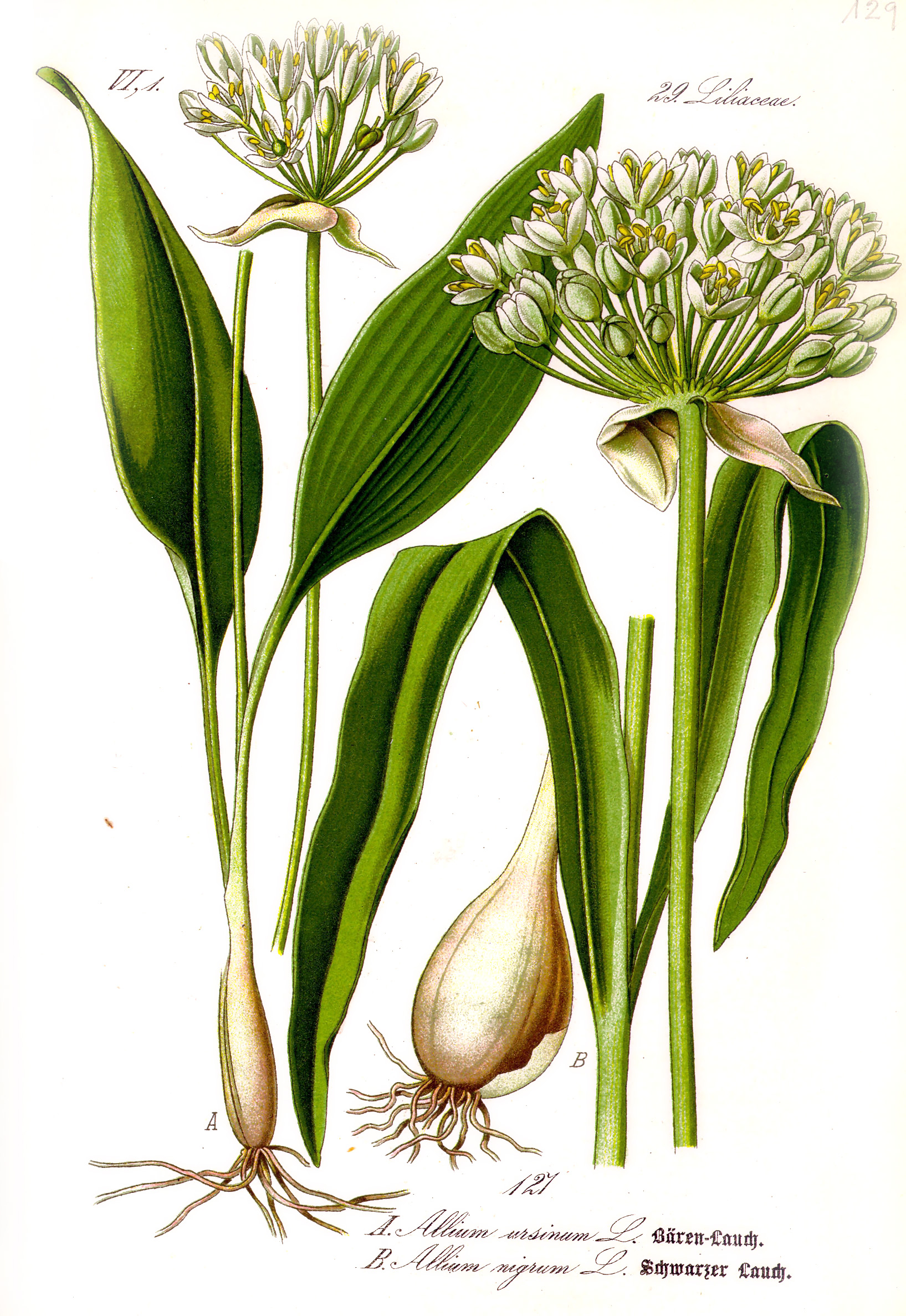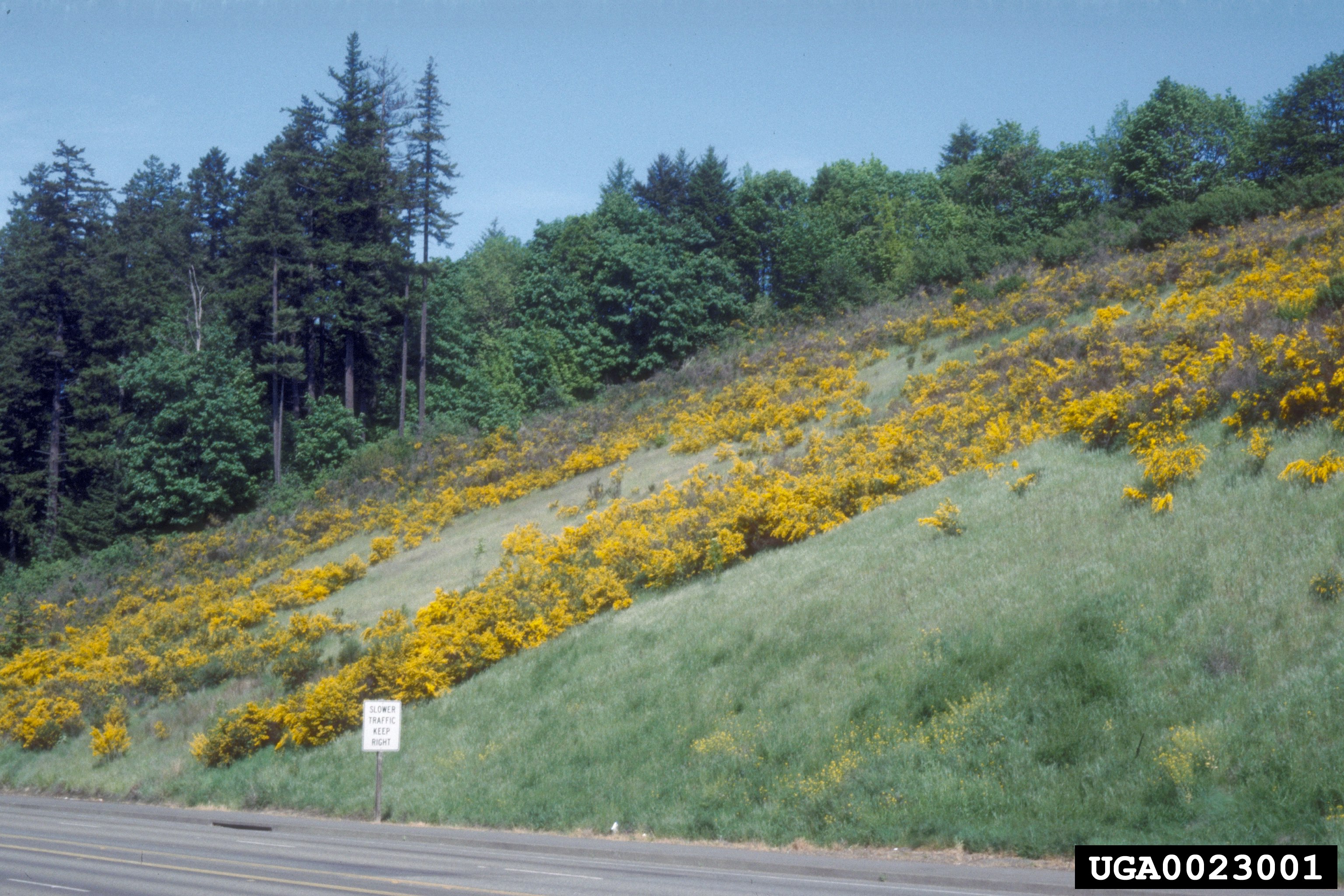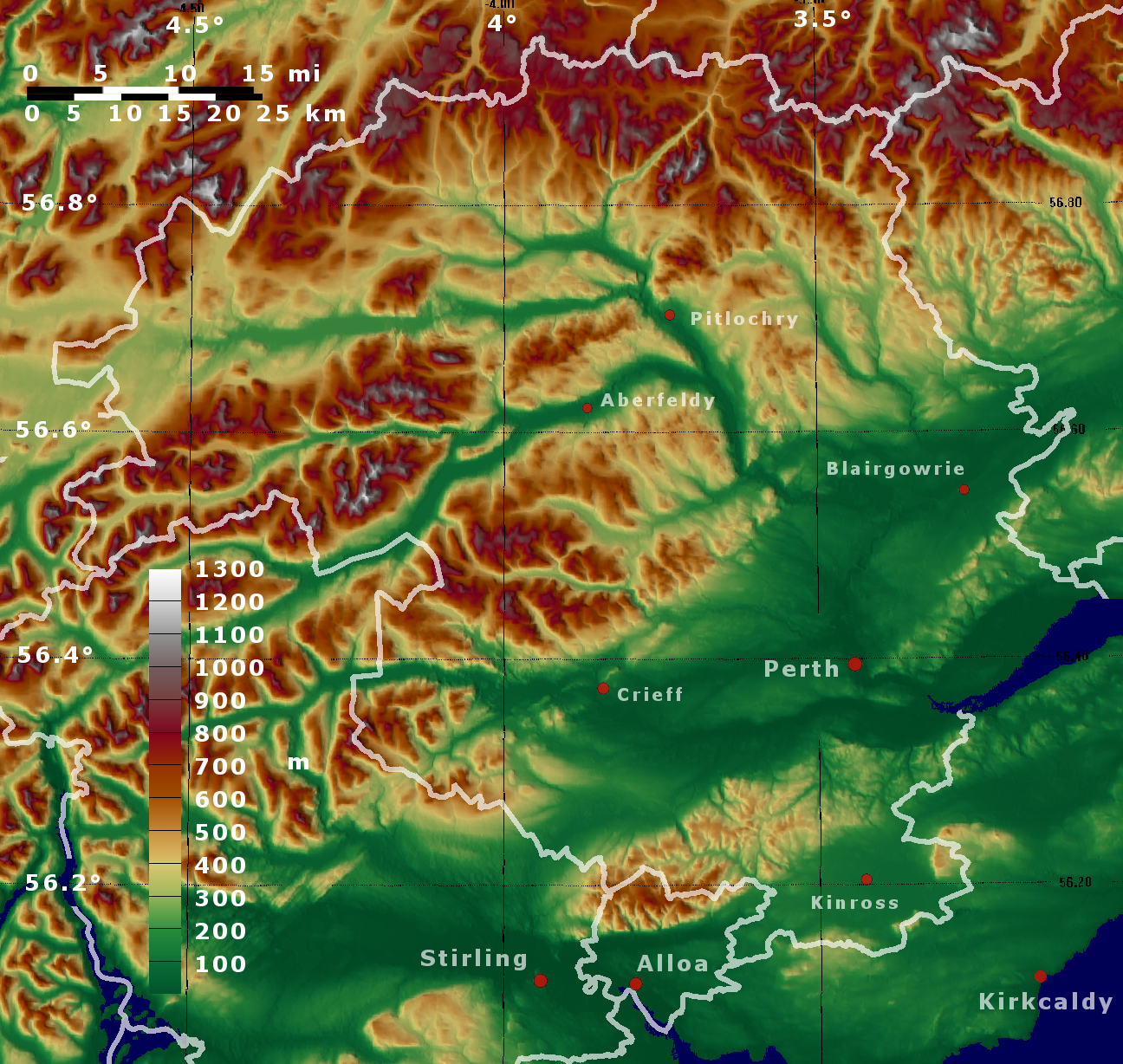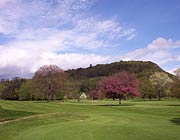|
Moncreiffe Island
Moncreiffe Island, also known as Friarton Island, is an island in Perth, Scotland. It divides the River Tay into two channels as it flows through Perth, and is crossed by the single-track Tay Viaduct, carrying the Scottish Central Railway. One half of the island is within Perth; the other is within Kinnoull parish. Land use The King James VI Golf Course is situated on and covers much of the island with the remaining land used for allotments. At the 2011 census, it is the only permanently inhabited freshwater island in Scotland which is not on Loch Lomond. Wildlife There are wild garlic, common bluebells, sweet cicely, broom A broom (also known as a broomstick) is a cleaning tool, consisting of usually stiff fibers (often made of materials such as plastic, hair, or corn husks) attached to, and roughly parallel to, a cylindrical handle, the broomstick. It is thus a ... and dog violets. The island is also frequently used by beavers. References External lin ... [...More Info...] [...Related Items...] OR: [Wikipedia] [Google] [Baidu] |
River Tay
The River Tay (, ; probably from the conjectured Brythonic ''Tausa'', possibly meaning 'silent one' or 'strong one' or, simply, 'flowing' David Ross, ''Scottish Place-names'', p. 209. Birlinn Ltd., Edinburgh, 2001.) is the longest river in Scotland and the seventh-longest in Great Britain. The Tay originates in western Scotland on the slopes of Ben Lui (), then flows easterly across the Highlands, through Loch Dochart, Loch Iubhair and Loch Tay, then continues east through Strathtay (see Strath), in the centre of Scotland, then southeasterly through Perth, where it becomes tidal, to its mouth at the Firth of Tay, south of Dundee. It is the largest river in the United Kingdom by measured discharge. Its catchment is approximately , the Tweed's is and the Spey's is . The river has given its name to Perth's Tay Street, which runs along its western banks for . Course The Tay drains much of the lower region of the Highlands. It originates on the slopes of Ben Lui ... [...More Info...] [...Related Items...] OR: [Wikipedia] [Google] [Baidu] |
Ramsons
''Allium ursinum'', known as wild garlic, ramsons, cowleekes, cows's leek, cowleek, buckrams, broad-leaved garlic, wood garlic, bear leek, Eurasian wild garlic or bear's garlic, is a bulbous perennial flowering plant in the amaryllis family, Amaryllidaceae. It is native to Eurasia, where it grows in moist woodland.GRIN-CA , Agriculture and Agri-Food Canada It is a wild relative of and , all belonging to the same genus, ''''. There are two recognized subspecies: ''A. ursinum'' subsp. ''ursinum ... [...More Info...] [...Related Items...] OR: [Wikipedia] [Google] [Baidu] |
Landforms Of Perth, Scotland
A landform is a land feature on the solid surface of the Earth or other planetary body. They may be natural or may be anthropogenic (caused or influenced by human activity). Landforms together make up a given terrain, and their arrangement in the landscape is known as topography. Landforms include hills, mountains, canyons, and valleys, as well as shoreline features such as bays, peninsulas, and seas, including submerged features such as mid-ocean ridges, volcanoes, and the great oceanic basins. Physical characteristics Landforms are categorized by characteristic physical attributes such as elevation, slope, orientation, structure stratification, rock exposure, and soil type. Gross physical features or landforms include intuitive elements such as berms, cliffs, hills, mounds, peninsulas, ridges, rivers, valleys, volcanoes, and numerous other structural and size-scaled (e.g. ponds vs. lakes, hills vs. mountains) elements including various kinds of inland and oceanic waterbodi ... [...More Info...] [...Related Items...] OR: [Wikipedia] [Google] [Baidu] |
River Islands Of Scotland
A river is a natural stream of fresh water that flows on land or inside caves towards another body of water at a lower elevation, such as an ocean, lake, or another river. A river may run dry before reaching the end of its course if it runs out of water, or only flow during certain seasons. Rivers are regulated by the water cycle, the processes by which water moves around the Earth. Water first enters rivers through precipitation, whether from rainfall, the runoff of water down a slope, the melting of glaciers or snow, or seepage from aquifers beneath the surface of the Earth. Rivers flow in channeled watercourses and merge in confluences to form drainage basins, or catchments, areas where surface water eventually flows to a common outlet. Rivers have a great effect on the landscape around them. They may regularly overflow their banks and flood the surrounding area, spreading nutrients to the surrounding area. Sediment or alluvium carried by rivers shapes the landscape ar ... [...More Info...] [...Related Items...] OR: [Wikipedia] [Google] [Baidu] |
Dog Violet
Dog violet is the common name for various species of the plant genus ''Viola'' with unscented flowers. The term arose to differentiate them from the scented sweet violet. Species so named include: *'' Viola canina'' – heath dog violet *''Viola labradorica'' ( syn. ''V. conspersa'') – American dog or alpine violet *''Viola reichenbachiana'' – early dog violet *''Viola riviniana'' – common dog violet The roots and seeds of this plant are toxic and should not be eaten. A number of species in the genus ''Erythronium'' in the family Liliaceae The lily family, Liliaceae, consists of about 15 genera and 610 species of flowering plants within the order Liliales. They are monocotyledonous, perennial, herbaceous, often bulbous geophytes. Plants in this family have evolved with a fai ... are sometimes referred to as "dog's-tooth violet". {{plant common name Viola (plant) ... [...More Info...] [...Related Items...] OR: [Wikipedia] [Google] [Baidu] |
Broom (shrub)
''Cytisus scoparius'' ( syn. ''Sarothamnus scoparius''), the common broom or Scotch broom, is a deciduous leguminous shrub native to western and central Europe. In Great Britain and Ireland, the standard name is broom; this name is also used for other members of the Genisteae tribe, such as French broom or Spanish broom; and the term ''common broom'' is sometimes used for clarification. In other English-speaking countries, the most common name is "Scotch broom" (or Scots broom); however, it is known as English broom in Australia. Though this plant is native to Europe, it has spread to many other parts of the world. Scotch broom is now common in certain areas of North America and South America. This is because people started introducing Scotch broom to different areas of the world. After it was introduced in North America, Scotch broom was frequently planted in gardens. Later, it was used for erosion control along highway cuts and fills. There are other problems with Scotc ... [...More Info...] [...Related Items...] OR: [Wikipedia] [Google] [Baidu] |
Myrrhis Odorata
''Myrrhis odorata'', with common names cicely ( ), sweet cicely, myrrh, garden myrrh, and sweet chervil, is a herbaceous perennial plant belonging to the celery family (biology), family Apiaceae. It is the only species in the genus ''Myrrhis''. Etymology The genus name ''Myrrhis'' derives from the Greek word myrrhis [μυρρίς], an aromatic oil from Asia. The Latin specific epithet ''odorata'' means ''scented''. Description ''Myrrhis odorata'' is a tall herbaceous perennial plant growing to tall and wide. The leaves are fernlike, 2–4-pinnate, finely divided, feathery, up to long, with whitish patches near the rachis. The plant is softly hairy and smells strongly of aniseed when crushed. The flowers are creamy-white, about 2–4 mm across, produced in large umbels. The flowering period extends from May to June. The fruits are slender, dark brown, 15–25 mm long and 3–4 mm broad. Distribution and habitat ''Myrrhis odorata'' is native to mountains of s ... [...More Info...] [...Related Items...] OR: [Wikipedia] [Google] [Baidu] |
Common Bluebell
''Hyacinthoides non-scripta'' (formerly ''Endymion non-scriptus'' or ''Scilla non-scripta'') is a bulbous perennial plant found in Atlantic areas from the north-western part of the Iberian Peninsula to the British Isles, and also frequently used as a garden plant. It is known in English as the common bluebell or simply bluebell, a name which is used in Scotland to refer to the harebell, '' Campanula rotundifolia''. In spring, ''H. non-scripta'' produces a nodding, one-sided inflorescence of 5–12 tubular, sweet-scented violet–blue flowers, with strongly recurved tepals, and 3–6 long, linear, basal leaves. ''H. non-scripta'' is particularly associated with ancient woodland where it may dominate the understorey to produce carpets of violet–blue flowers in " bluebell woods", but also occurs in more open habitats in western regions. It is protected under UK law, and in some other parts of its range. A related species, '' H. hispanica'' has also been introduc ... [...More Info...] [...Related Items...] OR: [Wikipedia] [Google] [Baidu] |
Loch Lomond
Loch Lomond (; ) is a freshwater Scottish loch which crosses the Highland Boundary Fault (HBF), often considered the boundary between the lowlands of Central Scotland and the Highlands.Tom Weir. ''The Scottish Lochs''. pp. 33-43. Published by Constable and Company, 1980. Traditionally forming part of the boundary between the shires of Scotland, counties of Stirlingshire and Dunbartonshire, Loch Lomond is split between the Subdivisions of Scotland, council areas of Stirling (council area), Stirling, Argyll and Bute and West Dunbartonshire. Its southern shores are about northwest of the centre of Glasgow, Scotland's largest city. The Loch forms part of the Loch Lomond and The Trossachs National Park which was established in 2002. From a limnological perspective, Loch Lomond is classified as a dimictic lake, meaning it typically undergoes two mixing periods each year. This occurs in the spring and autumn when the water column becomes uniformly mixed due to temperature-driven dens ... [...More Info...] [...Related Items...] OR: [Wikipedia] [Google] [Baidu] |
Perth And Kinross
Perth and Kinross (; ) is one of the 32 council areas of Scotland, and a Lieutenancy areas of Scotland, lieutenancy area. It is bordered by Highland (council area), Highland and Aberdeenshire to the north, Angus, Scotland, Angus, Dundee, and Fife to the east, Clackmannanshire to the south, and Stirling (council area), Stirling and Argyll and Bute to the west. Geographically the area is split by the Highland Boundary Fault into a more mountainous northern part and a flatter southern part. The northern area is a popular tourist spot, while agriculture makes an important contribution to the southern part of the area. The area is run by Perth and Kinross Council, which is based in Perth, Scotland, Perth. History The area takes its name from the two historical Shires of Scotland, shires of Perthshire and Kinross-shire. Each was administered by a Sheriff principal, sheriff from medieval times, supplemented by Commissioners of Supply, commissioners of supply from 1667 and then by a ... [...More Info...] [...Related Items...] OR: [Wikipedia] [Google] [Baidu] |
Allotment (gardening)
An allotment (British English), is a plot of land made available for individual, non-commercial gardening for growing food plants, so forming a kitchen garden away from the residence of the user. Such plots are formed by subdividing a piece of land into a few or up to several hundred parcels that are assigned to individuals or families, contrary to a community garden where the entire area is tended collectively by a group of people. The term "victory garden" is also still sometimes used, especially when a garden dates back to the World War I, First or World War II, Second World War. The individual size of a parcel typically suits the needs of a family, and often the plots include a shed for tools and shelter, and sometimes a hut for seasonal or weekend accommodation. The individual gardeners are usually organised in an allotment association, which leases or is granted the land from an owner who may be a public, private or ecclesiastical entity, and who usually stipulates that it ... [...More Info...] [...Related Items...] OR: [Wikipedia] [Google] [Baidu] |
King James VI Golf Club
King James VI Golf Club, located in Perth, Scotland, Perth, Scotland, is a private golf course also open to visitors. The River Tay setting is notable as it is the country's only self-contained course on a river island. The Island course is only accessible by foot by a side-walk on the side of a train bridge crossing the River Tay. Founded in 1858 nearby at Perth's North Inch, then relocated to Moncreiffe Island in 1897,Civic History of Perth from Medieval Times – Perth Civic Trust and a purpose-built course designed by Tom Morris, Sr., 'Old' Tom Morris, the legendary winner of multiple The Open Championship, British Open Championships. The club is currently captained by Roger Gordon, with Allan Knox the resident professional. History The origins of golf in Perth are obscure ...[...More Info...] [...Related Items...] OR: [Wikipedia] [Google] [Baidu] |







